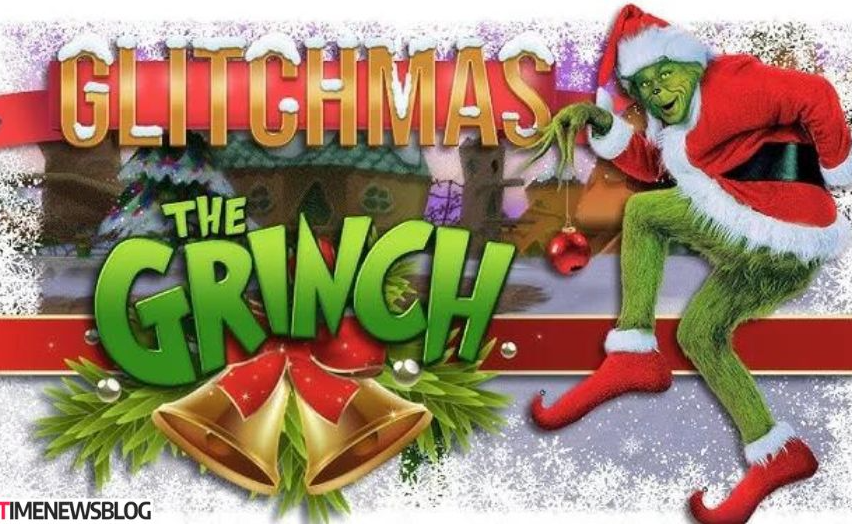The Grinch, a character synonymous with Christmas, has cemented himself as an unforgettable part of holiday culture. However, his journey extends far beyond Christmas carols and seasonal decorations. In what can only be described as a “glitch” in the pop culture matrix, the Grinch has transcended his original role, becoming an enduring figure across media platforms, memes, and merchandise—all year round. In this detailed exploration of “Grinch the Undying glitch,” we’ll uncover how the Grinch became a cultural mainstay beyond his holiday roots.
The Origins of the Grinch: A Christmas Legend
The Grinch’s tale began in 1957 when Dr. Seuss introduced him in How the Grinch Stole Christmas!. Originally conceived as a curmudgeon who hated the holiday season, the Grinch was a green, furry antagonist who found joy in ruining the celebrations of the Whos down in Whoville. Despite his villainous origins, the Grinch’s story ends in redemption, with him realizing that Christmas is more than just gifts and decorations. This underlying theme of personal growth and moral realization has contributed significantly to the character’s lasting appeal.
But how did the Grinch go from a Christmas villain to a cultural icon?
The first hint of his potential for longevity came with the release of the animated television special in 1966. Narrated by Boris Karloff, this adaptation of Dr. Seuss’s story became a holiday tradition in many households, solidifying the Grinch as a Christmas staple. For decades, he was a fixture of the festive season, yet it was only the beginning of his rise to cultural stardom.
The iconic phrase, “You’re a mean one, Mr. Grinch,” became emblematic of his character and set the tone for his persona. What started as a cautionary tale against selfishness and greed evolved into a nuanced character study, one that audiences of all ages could connect with on different levels.
The ‘Undying Glitch’: Grinch’s Impact on Modern Pop Culture
So, how does the Grinch, a character so deeply rooted in Christmas traditions, remain relevant all year? The answer lies in what we call the “Undying Glitch”—the unexpected continuation of his popularity through various modern channels. His persona has broken free from the confines of December, spreading into the broader landscape of digital culture.
This ‘glitch’ represents his ability to transcend his original story and permeate different facets of popular media. Internet culture, in particular, has played a significant role in this transformation. Social media platforms like Twitter, Instagram, and TikTok are filled with memes, hashtags, and viral content featuring the Grinch’s sardonic wit and mischievous grin.
The Grinch’s character aligns perfectly with modern anti-hero trends. His cynical outlook, reluctance to conform to societal norms, and eventual redemption arc resonate with audiences who see these characteristics reflected in their own experiences. The phrase “Grinch mode” has become shorthand for anyone feeling jaded or cynical about life’s more festive or consumer-driven moments.
Grinch’s Digital Presence: The Glitch That Lives Online
In today’s world, a character’s longevity is largely determined by their ability to thrive in the digital space. For the Grinch, his cultural rebirth is directly tied to his viral potential. The rise of internet memes has breathed new life into the character, ensuring he stays relevant year-round.
Why is the Grinch so perfect for meme culture?
It’s his duality. On the one hand, he is a villain, embodying frustration, greed, and misanthropy—emotions everyone has felt at one time or another. On the other hand, his redemption story shows that even the coldest heart can be warmed, making him a symbol of hope and transformation.
Memes showcasing the Grinch in all his grumpy glory tap into relatable human experiences—such as waking up early, dealing with annoying coworkers, or feeling overwhelmed during the holiday rush. These memes give the Grinch universal appeal, turning him into a beloved figure even in situations far removed from Christmas.
Social media users are quick to adapt his catchphrases, expressions, and actions for a variety of situations. As a result, his influence extends beyond children’s books and animated films; he has become a digital icon, a ‘glitch’ in the system, refusing to fade into holiday obscurity.
The Grinch in Contemporary Media: Beyond Christmas Specials
While the original Grinch character became famous for his role in Dr. Seuss’s holiday tale, his real cultural breakthrough came with his cinematic portrayals. The 2000 live-action adaptation starring Jim Carrey was a pivotal moment in Grinch history. Carrey’s portrayal injected new life into the character, giving him more depth, humor, and relatability. This version of the Grinch was a cynical outsider, not just because he disliked Christmas, but because of deep-seated insecurities and past traumas.
The film’s success confirmed that the Grinch could appeal to audiences well beyond Christmas. Carrey’s Grinch became a household name and, for many, the definitive version of the character. His memorable one-liners and exaggerated facial expressions became quotable material and fertile ground for meme creators.
The Grinch has also returned to animation, with the 2018 release of The Grinch, voiced by Benedict Cumberbatch. This rebooted version further solidified the character’s place in modern culture. The film focused on the Grinch’s backstory, offering more insight into his motivations and transforming him into a more sympathetic figure.
These adaptations have stretched the Grinch’s appeal across multiple generations, ensuring that he remains an active part of contemporary media. His story is now viewed not just as a Christmas tale but as a year-round character arc about growth, redemption, and belonging.
More Visit: Timenewsblog
The Psychological Appeal of ‘Grinch The Undying Glitch’
The Grinch’s enduring popularity can also be explained by psychological factors. At its core, the Grinch’s story is about an anti-hero. His misanthropic tendencies, his disdain for societal norms, and his cynicism are traits that many people can relate to, especially in a world increasingly dominated by commercialization, stress, and social pressures.
Why does the Grinch resonate so deeply with modern audiences?
The key is in his transformation. The Grinch is not a static character; he evolves from a bitter recluse into someone who can appreciate joy, community, and love. This arc reflects a universal human experience—the ability to change, to be better, and to find meaning in what we once despised. His anti-hero status makes him more compelling than the one-dimensional holiday figures that often populate Christmas stories.
Additionally, the Grinch’s struggles with isolation, insecurity, and frustration mirror modern-day emotions. During stressful times, especially around the holidays, it’s easy to feel overwhelmed, and the Grinch embodies those feelings. His eventual realization that “Christmas doesn’t come from a store” speaks to the desire for authenticity in an increasingly commercialized world.
This complexity has allowed the Grinch to remain a relevant and multi-dimensional character, reflecting deeper human emotions and social commentary.
How ‘Grinch The Undying Glitch’ Reflects Changing Holiday Traditions
Over the years, holiday traditions have evolved. What once was a strict and formulaic celebration of religious and cultural significance has transformed into a more flexible, diverse, and inclusive array of celebrations. Characters like the Grinch, originally tied to specific holidays, have also changed with the times, morphing into symbols that resonate throughout the year.
How does ‘Grinch The Undying Glitch’ reflect these changes?
In a world where people are increasingly disillusioned by commercialism and tradition, the Grinch offers a refreshing alternative to conventional holiday cheer. His disdain for over-the-top festivities and consumerism aligns with a growing segment of society that prefers simplicity and authenticity over materialism.
Moreover, the Grinch’s transformation at the end of the story—from a cynic to someone who understands the value of community—mirrors a shift in holiday traditions toward more meaningful, less commercialized celebrations. As people seek to strip away the unnecessary trappings of the holiday season, the Grinch’s message becomes even more relevant, providing a ‘glitch’ in the system of consumer-driven holidays.
The Future of ‘Grinch The Undying Glitch’
As we look to the future, it’s clear that the Grinch is not going anywhere. His ability to remain relevant in a rapidly changing media landscape speaks to his timeless appeal. As long as internet culture continues to recycle and repurpose old characters, the Grinch will remain part of the conversation.
We can expect new adaptations, merchandise, and digital content that continue to push the boundaries of what the Grinch represents. Whether it’s new films, interactive digital experiences, or fan-created content, the Grinch is poised to remain an enduring figure.
But how far can the ‘glitch’ go?
The Grinch’s ‘glitch’ into year-round relevance may inspire new narratives where his character is explored in different settings—perhaps even beyond Whoville. As our relationship with holidays continues to evolve, so too may our connection with characters like the Grinch, who offer a more complex view of what it means to be festive, joyful, and ultimately human.
Conclusion
The tale of the Grinch started as a holiday fable, but it has since become much more. ‘Grinch The Undying Glitch’ perfectly captures how this once-seasonal villain has glitched into our cultural consciousness, appearing in memes, movies, and media far beyond Christmas. From his origins as a character of redemption to his transformation into a cultural icon, the Grinch continues to captivate audiences, providing us with valuable lessons about growth, transformation, and the true meaning of happiness—even if it’s a bit cynical at first glance.
The Grinch is here to stay, not just as a holiday staple but as an undying presence in our collective imagination.




